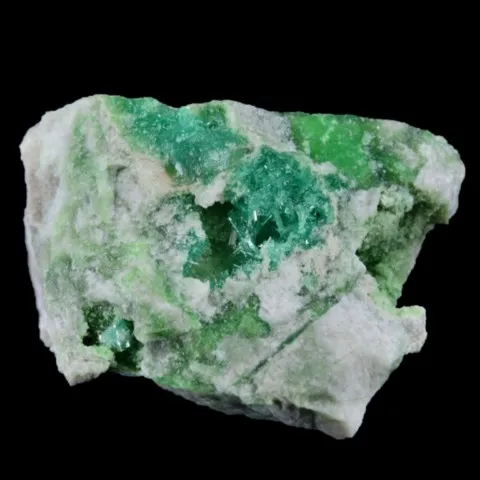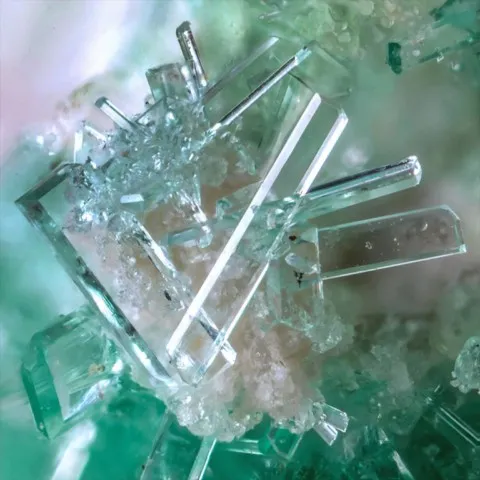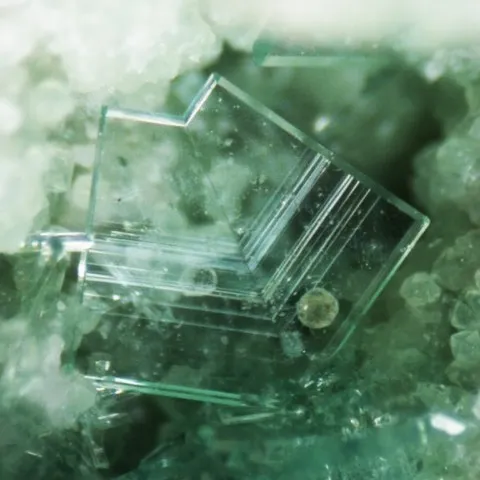METAVARISCITE
Class : Phosphates, arsenates, vanadates
Subclass : Hydrated phosphates
Crystal system : Monoclinic
Chemistry : AlPO4 2H2O
Rarity : Rare
Metavariscite (or clinovariscite) is the much rarer dimorph of variscite, with which it is always associated. It possibly forms a continuous series with phosphosiderite, its iron-bearing equivalent. Metavariscite is essentially a product of supergene alteration of phosphate rocks of various types. It is likely that it is also a partially "anthropogenic" mineral, formed by the reaction of phosphate fertilizers in acidic soils. Its name comes from the Greek meta (after), in allusion to its different habit from its dimorph, variscite. Metavariscite forms tiny crystals of varied habit, but especially spheroidal aggregates and concretions. Its color is very light green.
Main photo : Metavariscite of Lucin, Utah, USA © Jerry Cone
Metavariscite in the World
Twinning
A contact twin is known on {102}.
Fakes and treatments
No fakes recorded for this mineral species.
Hardness : 3.5
Density : 2.51 to 2.54
Fracture : Undetermined
Streak : White
TP : Translucent to transparent
RI : 1.551 to 1.582
Birefringence : 0.031
Optical character : Biaxial -
Pleochroism : Low
Fluorescence : None
Solubility : Hydrochloric acid
Magnetism : NoneRadioactivity : None





